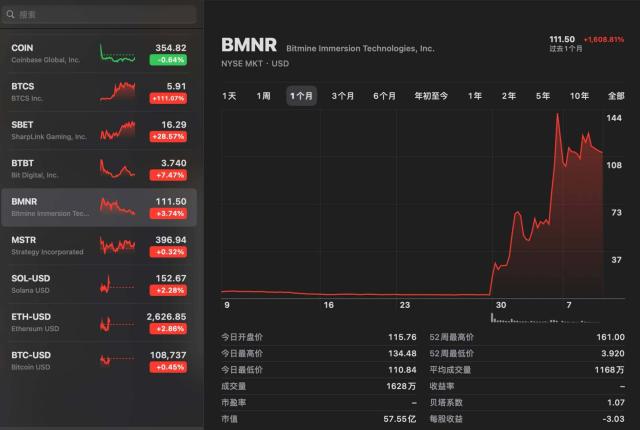Written by: KarenZ, Foresight News
This week (July 7th), Nasdaq-listed mining company Bit Digital (BTBT) announced the completion of a comprehensive transformation towards an Ethereum treasury strategy, accumulating over 100,000 ETH.
This move not only marks a significant shift in its business focus from Bitcoin mining to the Ethereum ecosystem, demonstrating firm confidence in the long-term potential of the Ethereum ecosystem, but also reflects the growing institutional attractiveness of Ethereum.
This article will analyze Bit Digital's development history, transformation background, and core motivations for turning to Ethereum.
Bit Digital's Past and Present
Origin: A Crisis-Ridden "First Chinese Car Loan Stock"
Bit Digital's predecessor can be traced back to Golden Bull Limited.
... [rest of the translation continues in the same manner, maintaining the original structure and translating all text except for specific terms like Bit, ETH, etc.]Bit Digital's digital asset mining profitability continues to weaken: In the first quarter of 2025, Bit Digital's digital asset mining revenue was $7.77 million, a 64% decrease from the $21.89 million mining revenue in the first quarter of 2024. Meanwhile, the cost consumed by digital asset income decreased from $12.98 million in the first quarter of 2024 to $6.12 million. Calculated by the cost-to-income ratio that reflects profitability, it was 59% in the first quarter of 2024 and rose to 78% in the first quarter of 2025, excluding depreciation and amortization expenses (total business $7.24 million). A higher cost-to-income ratio indicates higher costs per unit of income, meaning weaker profitability.
The company's business structure is unbalanced, with digital mining revenue share continuously declining: In the first quarter of 2025, this business revenue accounted for only 31% of total revenue, compared to 72% in the same period of 2024, urgently needing new growth points to support performance.
Ethereum Ecosystem's Attractiveness
In 2024, ETH staking income was $600,000, a 72% increase from the same period last year. As of March 31, 2025, Bit Digital had approximately 21,568 ETH staked in the native staking protocol. After increasing Ethereum holdings to 100,603 tokens, Bit Digital stated that it is not just buying tokens but allocating its reserves to a protocol.
Ethereum's staking mechanism allows holders to obtain a relatively stable annual yield by locking tokens. Compared to Bitcoin mining's high energy consumption and uncertainty, staking provides more predictable returns. High-energy mining activities are limited under carbon neutrality goals, and Ethereum's proof-of-stake mechanism has extremely low energy consumption, better aligning with global sustainable development trends.
Institutional allocation shifting towards diversification: As Ethereum ecosystem adoption increases, institutional investors are gradually moving from Bitcoin-dominated allocation to diversification, beginning to value Ethereum's long-term value.
In summary, Bit Digital's development journey is a process of transformation from crisis: from a troubled Chinese P2P platform to listing on Nasdaq, then transforming into a Bitcoin mining enterprise, deploying HPC and AI, and now fully pivoting to Ethereum when mining income falls short of expectations. Its strategic adjustments have always closely followed trends. However, this bet on Ethereum also faces new challenges - performance will be highly tied to Ethereum's price.
For the Crypto industry, Bit Digital's transformation is both a microcosm of Ethereum ecosystem's increased attractiveness and reflects how institutions and mining companies are shifting their digital asset allocation logic from "mining profits" to "long-term asset holding". In the future, as the Ethereum ecosystem further matures, more institutions may join this track.








